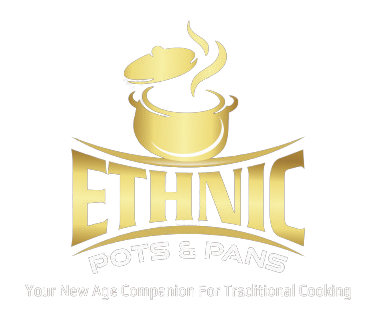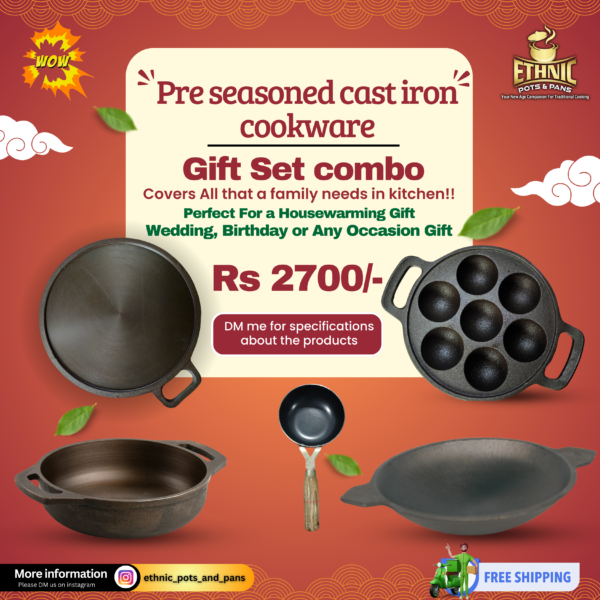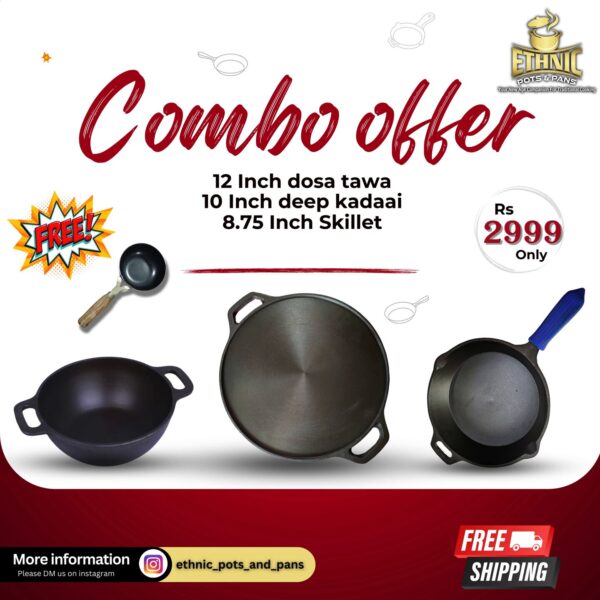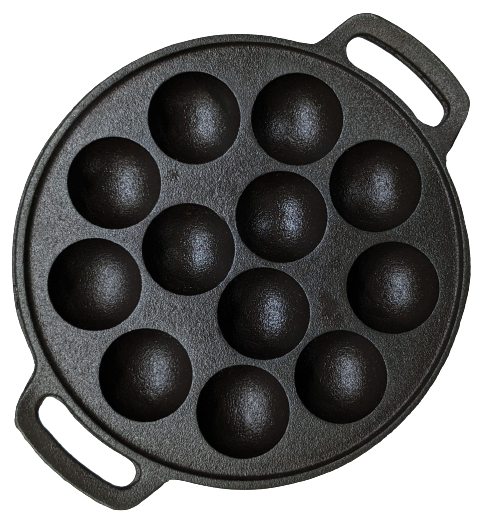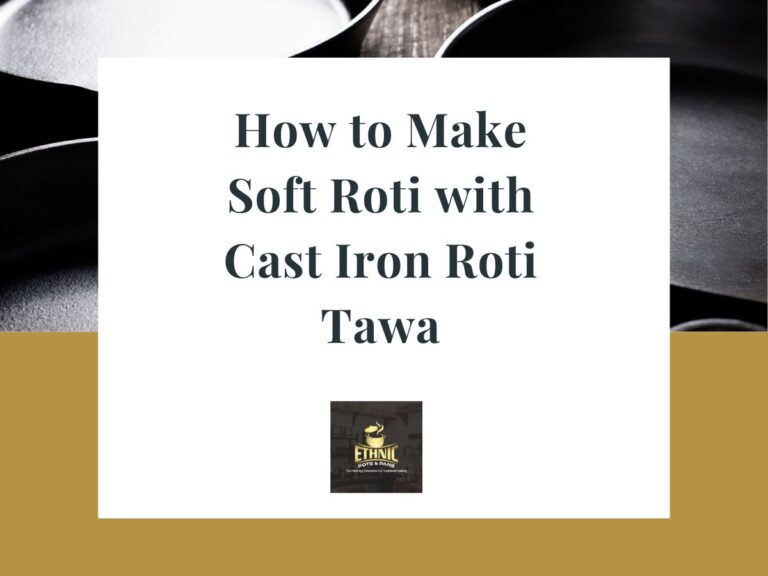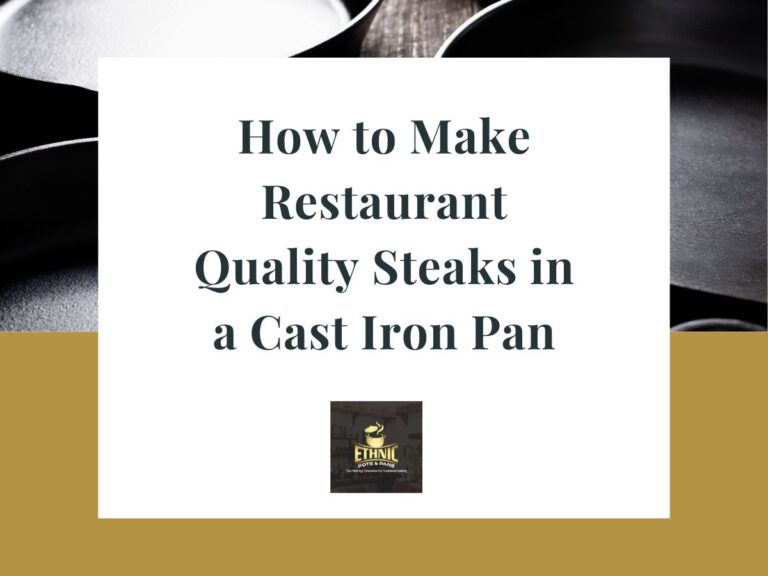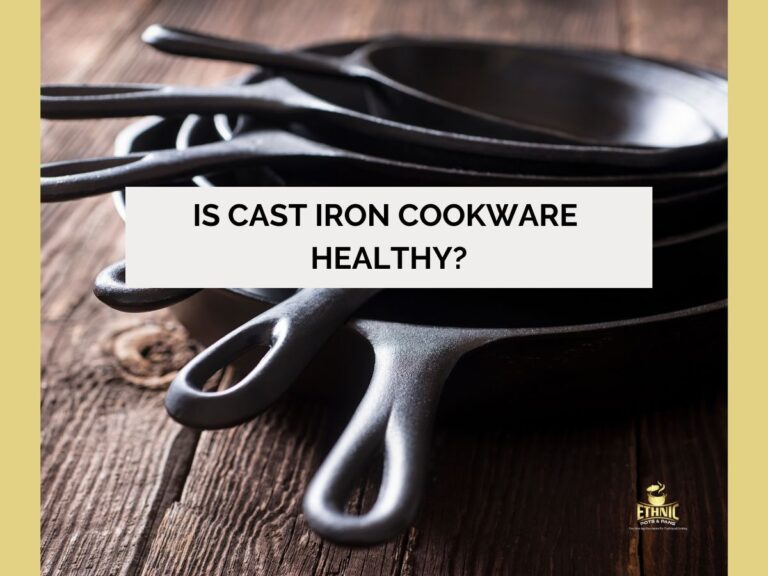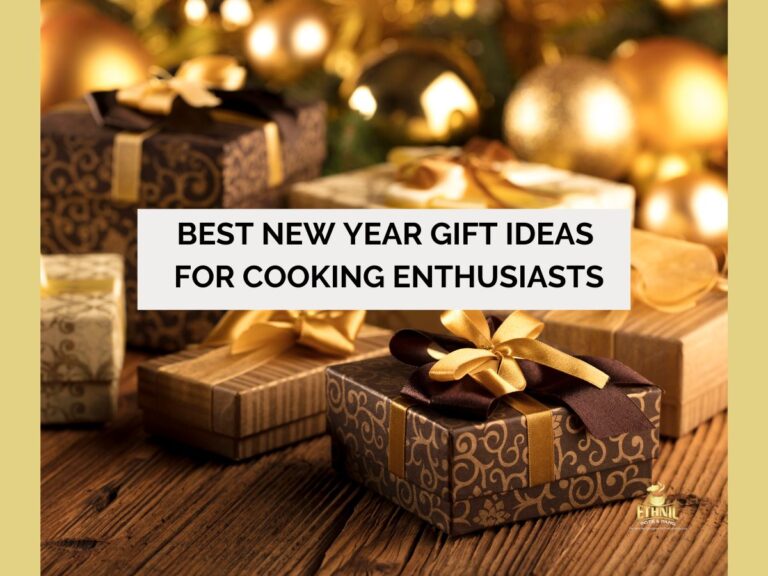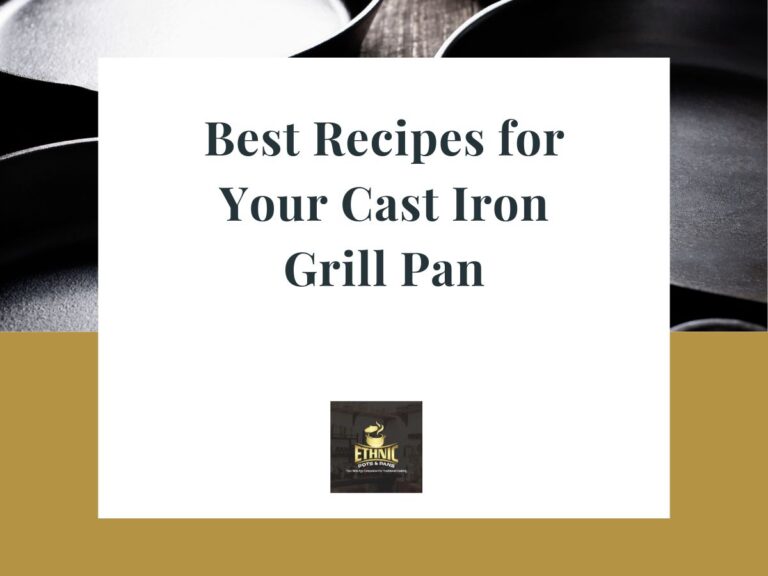Been wondering about Different Types of Iron Cookware available around you? Iron cookware is known for its durability, heat retention, and ability to enhance the flavor of food. Here are the main types of iron cookware and their specific uses:
1. Cast Iron Cookware
Cast iron cookware is made by pouring molten iron into molds. It’s known for its excellent heat retention and even cooking properties.
Common Types:
Skillets/Frying Pans: Versatile, ideal for frying, searing, and browning. They can be used on stovetops, in ovens, and even on campfires.
Dutch Ovens: Deep pots with heavy lids, perfect for slowcooking, braising, and baking. They are often used for soups, stews, and even baking bread.
Grill Pans: Feature raised ridges that create grill marks on food. Suitable for grilling meat, vegetables, and sandwiches indoors.
Baking Pans: Used for baking bread, cakes, and other desserts, providing an even bake with a crispy crust.
Benefits:
Longlasting and durable
Improves with use, developing a natural nonstick surface
Adds a small amount of iron to food
Drawbacks:
Heavy and can be difficult to handle
-
Beginners Combo/ Gift Set Combo – Pre-seasoned cast iron Combo
Original price was: ₹4,999.00.₹2,700.00Current price is: ₹2,700.00. -
Best Cooking Essentials Combo
Original price was: ₹5,999.00.₹2,999.00Current price is: ₹2,999.00. -
Pre-seasoned 12 Pits flat bottom paniyaaram pan
₹1,500.00 – ₹1,700.00
2. Enameled Cast Iron Cookware
Enameled cast iron cookware has a porcelain enamel coating that prevents rust and eliminates the need for seasoning.
Common Types:
Dutch Ovens: Similar to traditional cast iron Dutch ovens but with an enamel coating. Ideal for the same slowcooking, braising, and baking tasks.
Casserole Dishes: Used for baking casseroles, lasagnas, and other baked dishes.
Skillets/Frying Pans: Versatile like traditional cast iron skillets but easier to maintain.
Benefits:
Nonreactive, can cook acidic foods without damaging the surface
Easier to clean and maintain
Available in various colors and styles
Drawbacks:
More expensive than traditional cast iron
Enamel can chip or crack if not handled carefully
Enamel is a chemical coating on top of cast iron .
3. Wrought Iron Cookware
Wrought iron cookware is made by forging iron into the desired shape. It is lighter than cast iron
Common Types:
Skillets/Frying Pans: Lighter alternative to cast iron skillets, suitable for frying, searing, and browning.
Griddles: Flat cooking surfaces perfect for pancakes, crepes, and grilling sandwiches.
Woks: Versatile for stirfrying, deepfrying, and steaming.
Benefits:
Lighter and easier to handle than cast iron
Heats up quickly
Drawbacks:
Not as widely available as cast iron
Requires very regular seasoning to prevent rust
As they are thin, heat spread will not be even .
As they are thin, heat retention capacity is also less when compared to cast iron
4. Carbon Steel Cookware
Carbon steel cookware is made from an alloy of iron and carbon. It is lighter than cast iron but has similar cooking properties.
Common Types:
Skillets/Frying Pans: Versatile, used for frying, searing, and sautéing.
Woks: Ideal for highheat cooking methods like stirfrying.
Crepe Pans: Specifically designed for making thin crepes and pancakes.
Benefits:
Lighter than cast iron, easier to handle
Heats up quickly and evenly
Develops a natural nonstick surface with use
Drawbacks:
Requires seasoning and regular maintenance
Can react with acidic foods if not properly seasoned
Each type of iron cookware has its unique advantages and is suitable for different cooking methods. Cast iron cookware is particularly valued for its heat retention, durability, and ability to add a natural nonstick surface with seasoning. Enameled cast iron offers the same benefits with easier maintenance, while wrought iron and carbon steel provide lighter alternatives with similar cooking properties. Choosing the right type of iron cookware depends on your cooking needs, preferences, and maintenance willingness.
